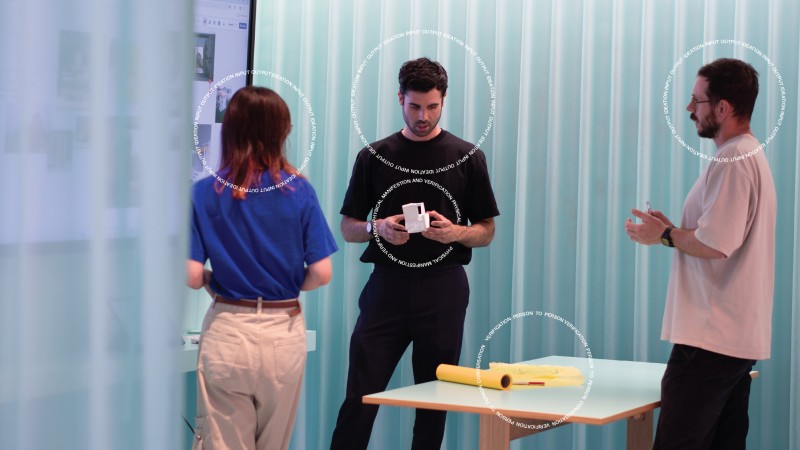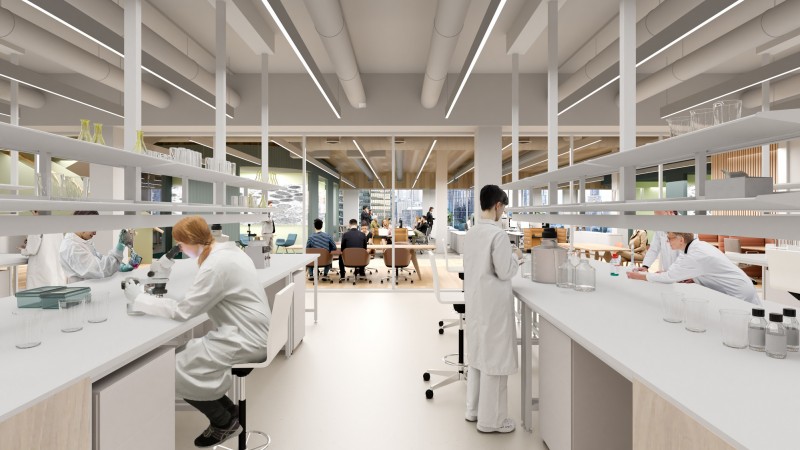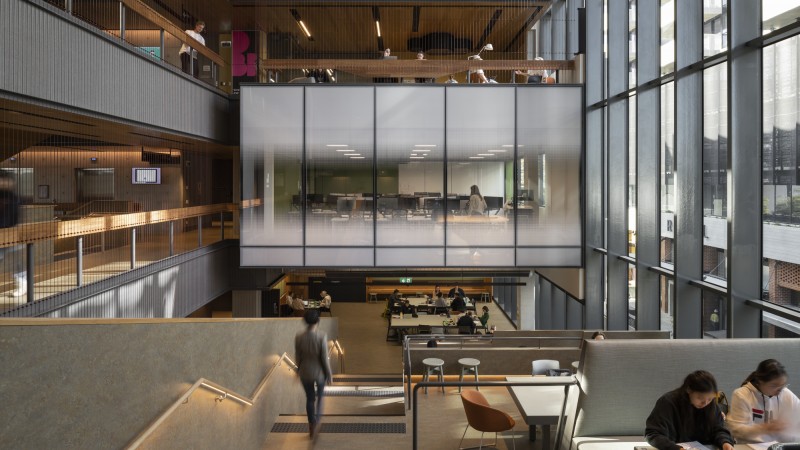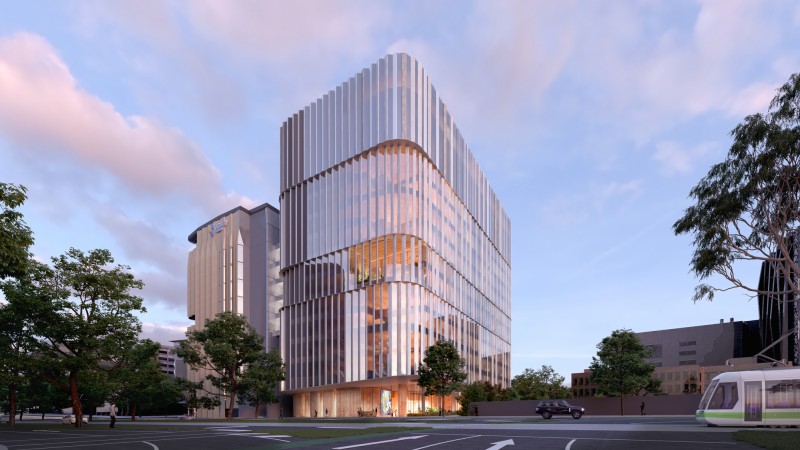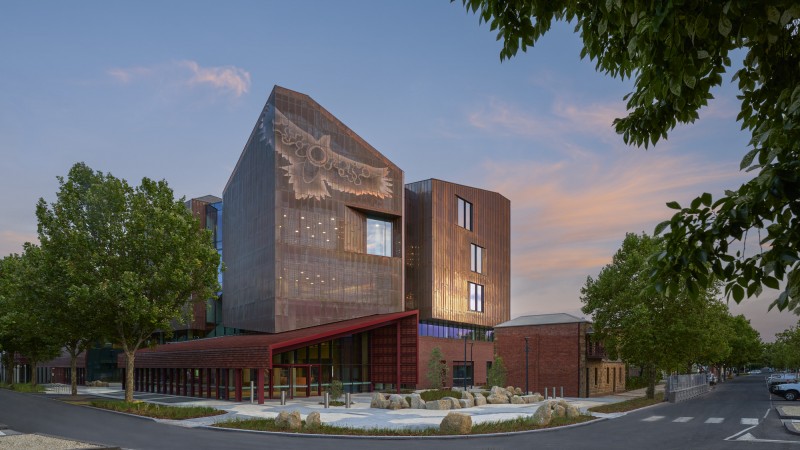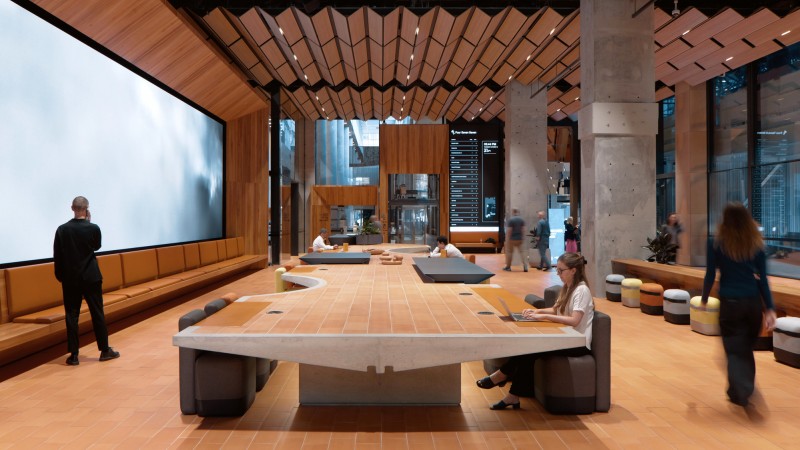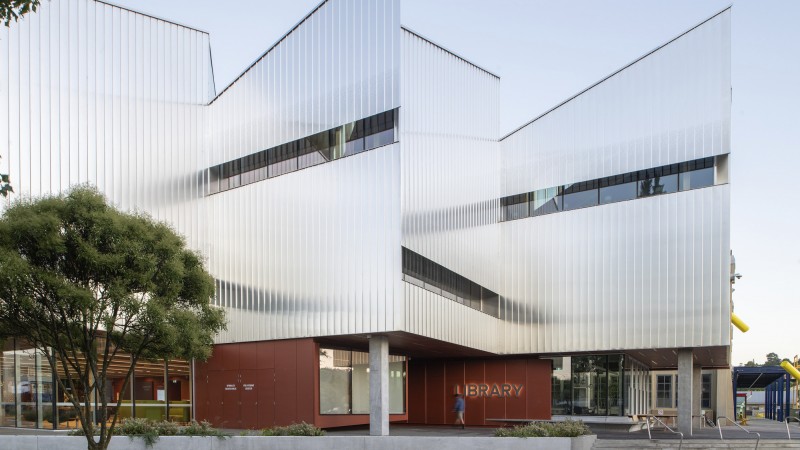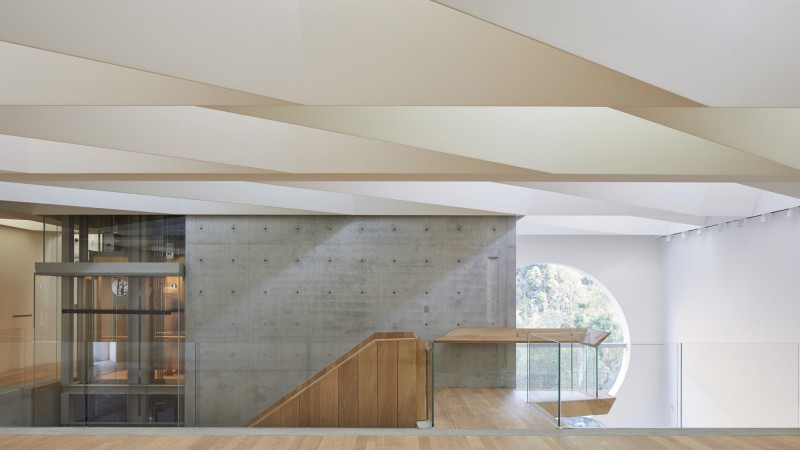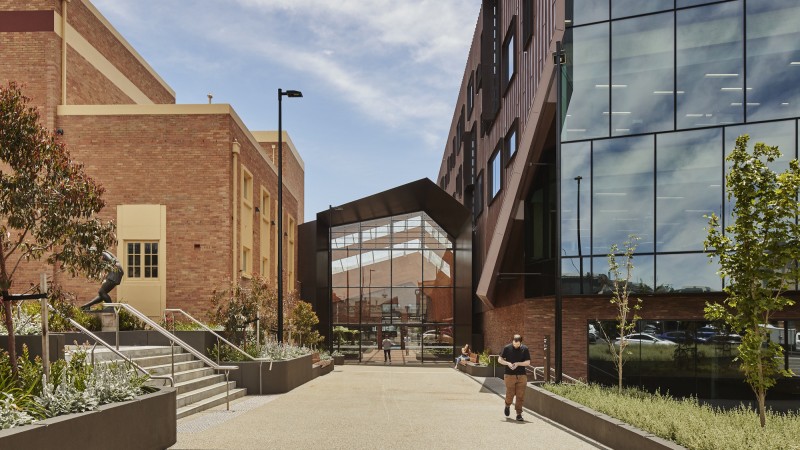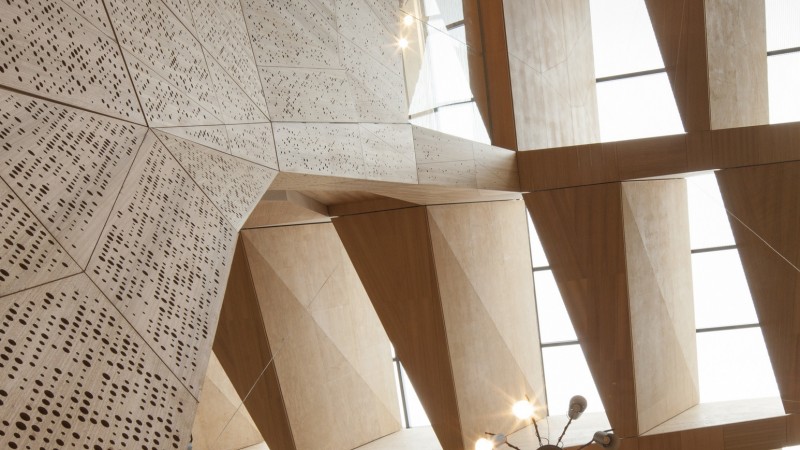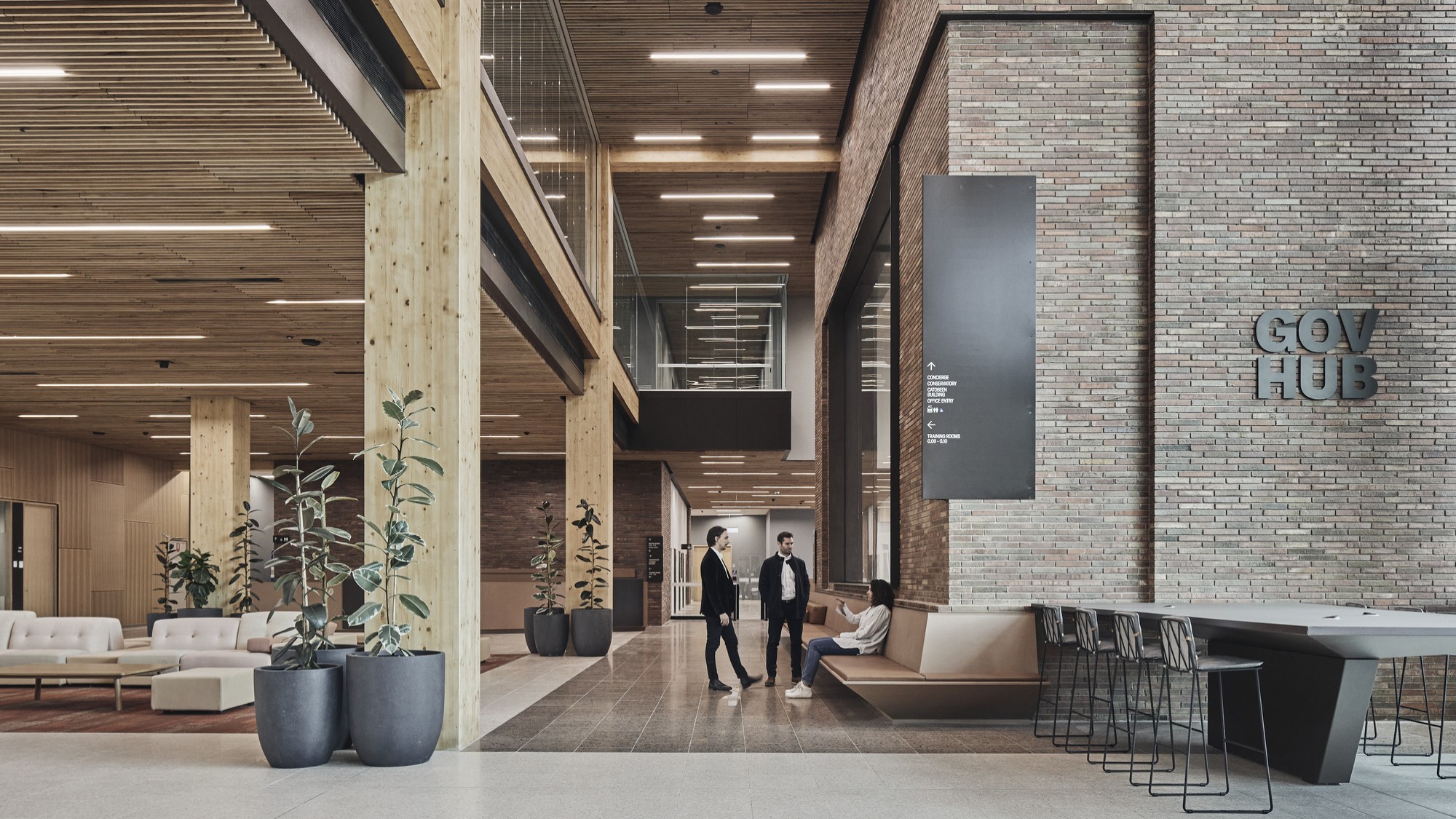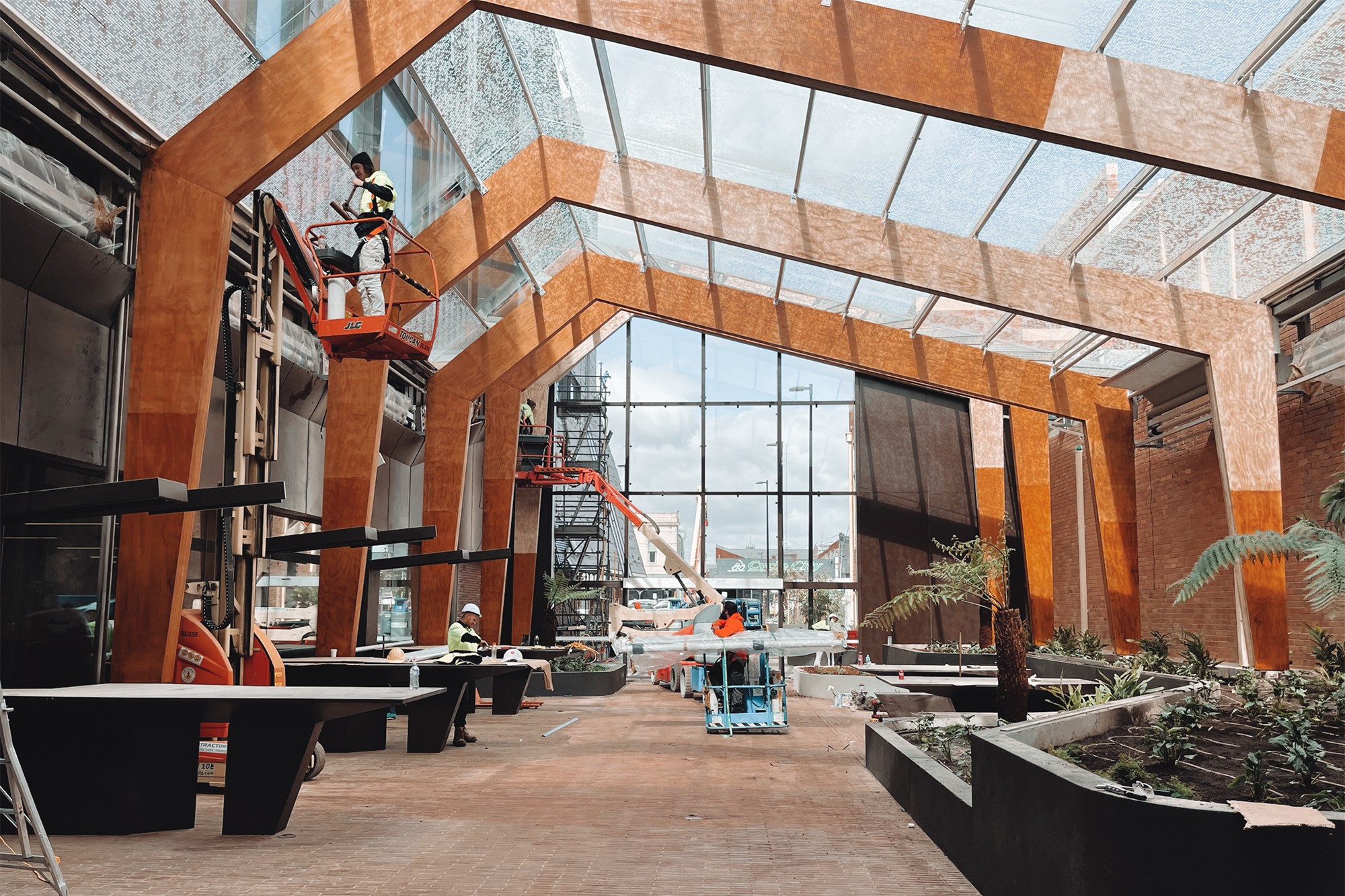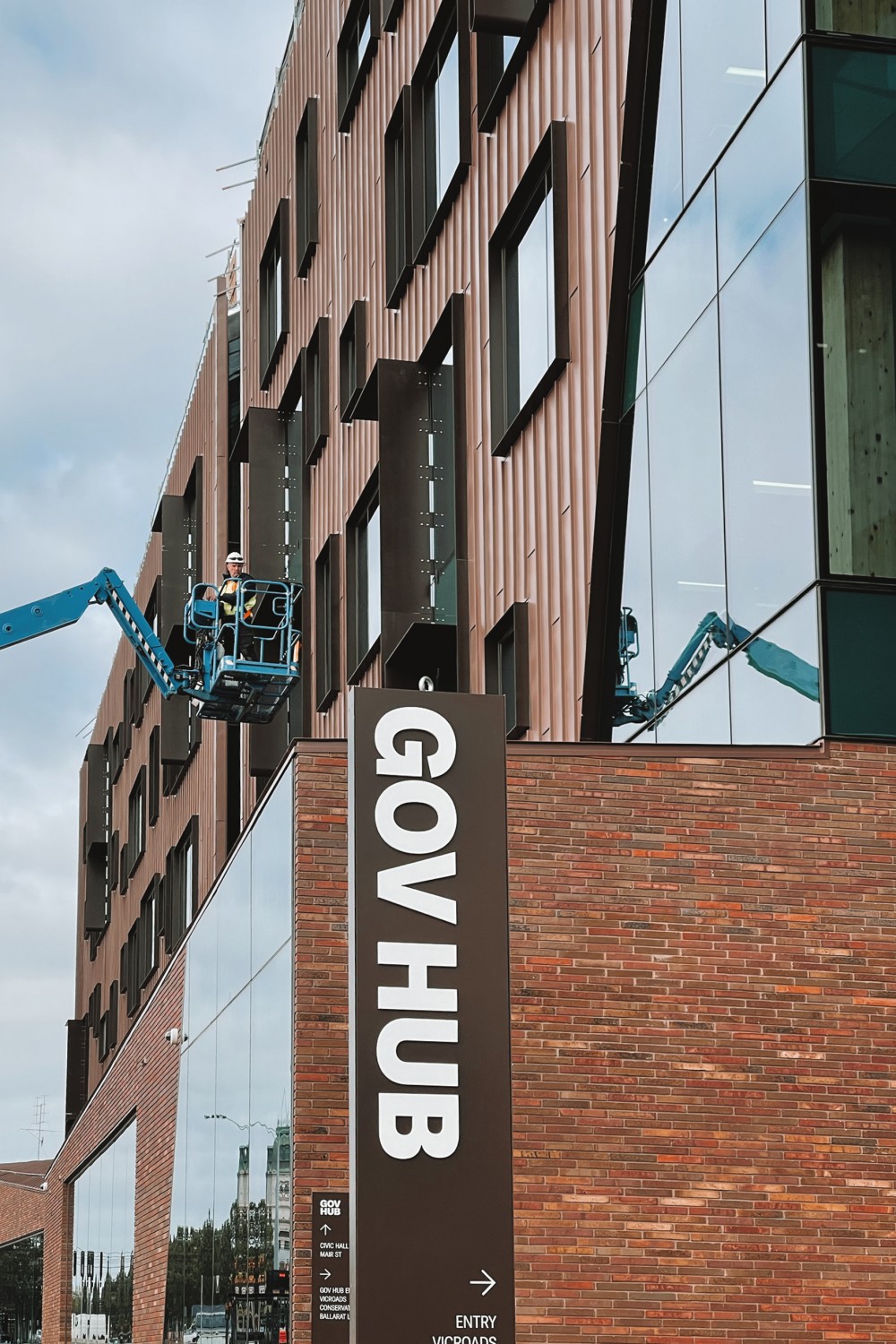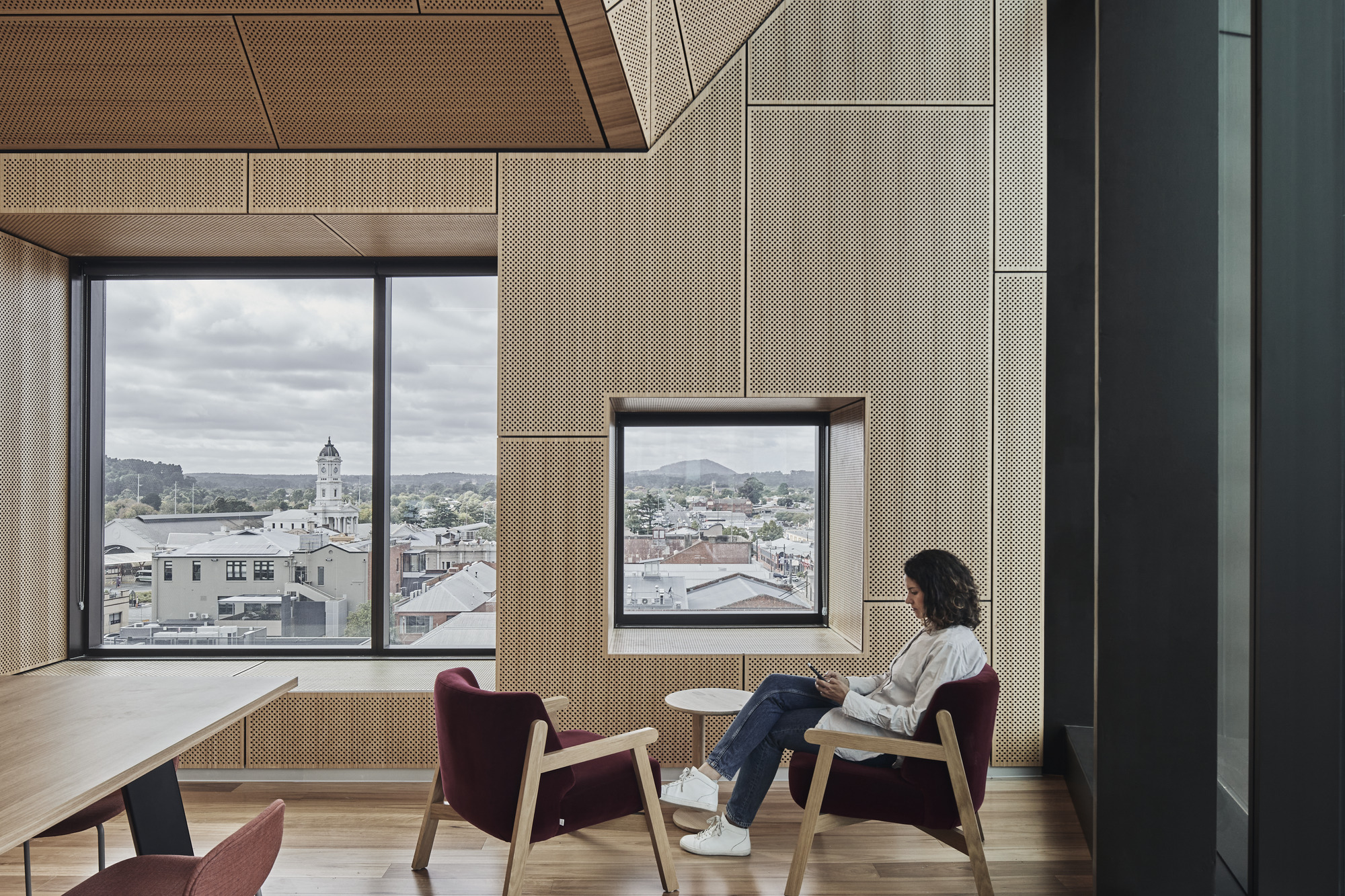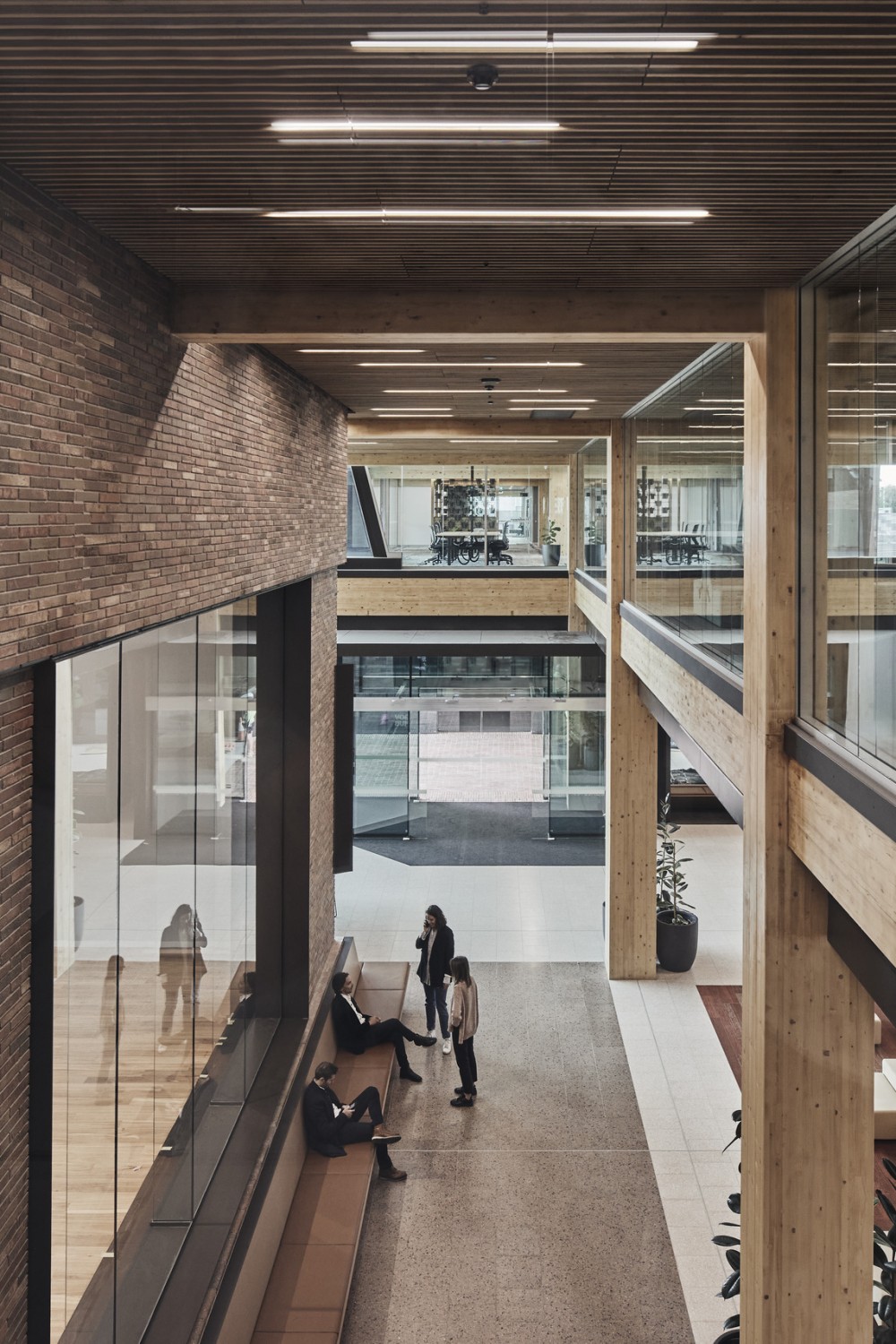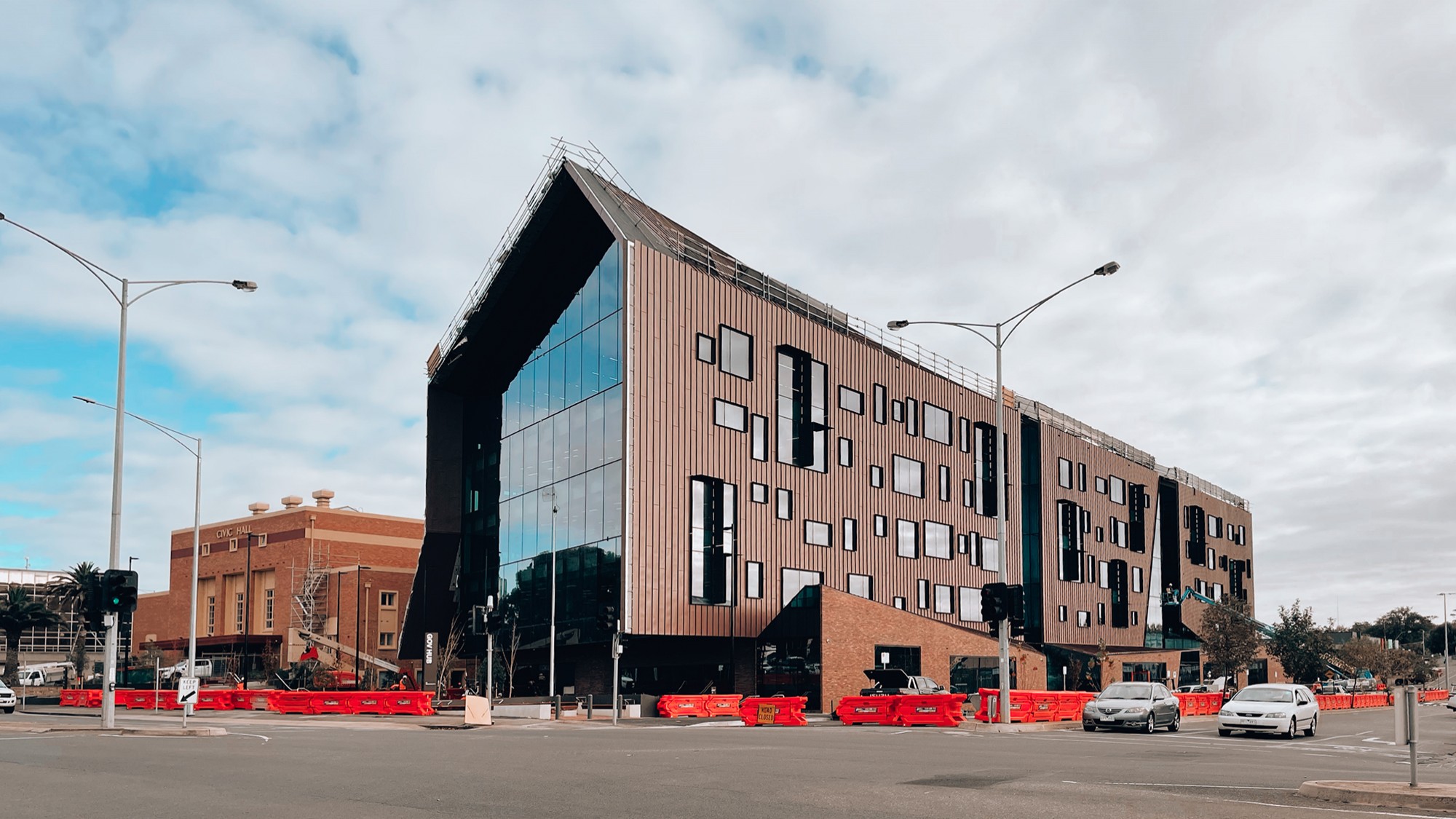Ballarat GovHub was officially opened on April 21. Partner Stefan Mee writes about the project's aspirations and reflects on how the design engages with its context and its purpose.
The completion of the Ballarat Gov Hub means that over one thousand workers can now move in, find their desk and perhaps contemplate the view of the town hall’s clock tower, or nearby church spire, as they start work.
Importantly, it is also a major step forward in the revitalisation of the entire civic precinct, once at the social heart of the local community. The Civic Hall itself hosted dances, balls and functions that were weekly events, before closing around twenty years ago. Still well remembered is the gig played by ACDC, in January 1977, as part of their Giant Dose of Rock and Roll Tour. With the Civic Hall recently refurbished, the Gov Hub makes new connections, encourages daily activity at ground level and encloses a landscaped park so that old and new work in tandem as a coordinated precinct.
